Log in or create new account to save this product to your wishlist.
Everything You Need to Know About Lawn Sanding
Lawn sanding can help compacted soil take in more nutrients. Find out how and why you should add lawn sand for spectacular results to all lawns.
Latest articles
7 MIN 22 Jul How to keep your lawn in shape this summer 9 MIN 15 Jul Watering Your Garden: 10 Top Tips! 11 MIN 15 Jul Is Your Grass Type Right for your Garden? 11 MIN 10 Sep Create Your Low-Maintenance Garden – Tips and Ideas 11 MIN 08 Sep The Ultimate Guide to Choosing the Perfect Hedges for Your Garden 12 MIN 30 Aug The Top 20 Evergreen Climbers to Transform Your GardenYou’ve developed a thorough lawn care programme — but something’s still wrong. Your lawn has yellow and bare spots, weeds are proliferating, and despite regular mowing, fertilising, and scarifying, your grass refuses to improve. It could be time for lawn sanding.
- What is lawn sanding?
- The effects of lawn sanding
- Lawn sanding for long-term lawn success
- The ideal lawn sand
- When and how to apply lawn sand
- Lawn sanding in spring
- Lawn sanding in autumn
- How much lawn sand should I use?
- How to prepare your lawn for sanding
- A step-by-step guide to sanding your lawn
- Have any questions?
- Frequently Asked Questions
What?
No, it’s nothing like sanding down a piece of wood. Sprinkling a layer of sand can improve your topsoil while helping break up the solid mud crust that’s preventing proper root penetration.
This article explains how lawn sanding could help improve your soil AND your lawn’s chance of becoming the most beautiful in your neighbourhood.
Let’s get sanding!
What is lawn sanding?
It’s as simple as it sounds: sprinkling a layer of sand to a maximum of 3 cm will help improve your soil — especially if it is heavy and clay-like. But don’t overdo it — you can exacerbate the problem if you add too much sand too often.
Over time, the sand layer gets absorbed into the ground, improving and loosening the texture and drainage of your topsoil.
Adding sand also helps neutralise the pH of your soil, which will help discourage weeds and strengthen the roots of your grass plants. This allows the roots to burrow deeper into the ground, providing better drought resistance and boosting your lawn’s immunity to diseases.
The effects of lawn sanding
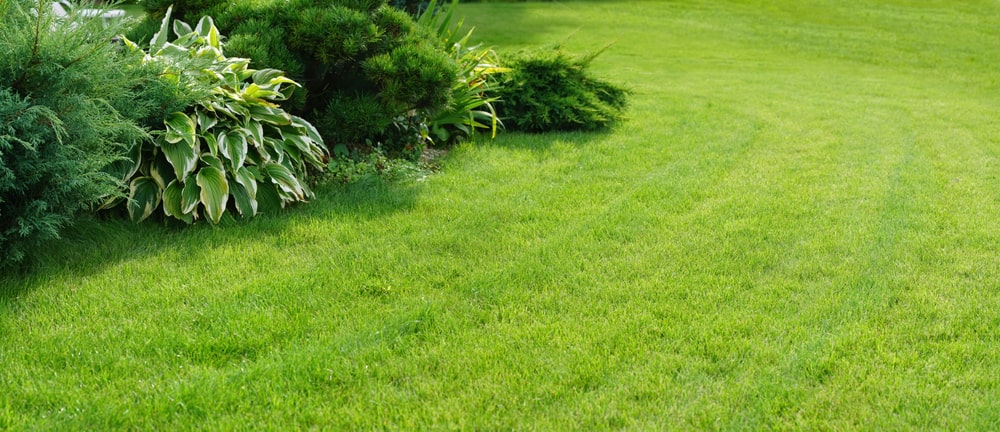
Use lawn sand to remedy heavily-stressed or poorly-nourished soil. Soils in poor condition are often too dense to allow root spread, so adding sand improves the pore size of your lawn soil.
This helps water, nutrients, and oxygen penetrate the earth to feed your lawn’s roots.
Adding lawn sand helps your soil by:
- Improving the air circulation
- Increasing sunlight penetration
- Killing and prevents moss, especially if the sand contains iron sulphate
- Optimises the soil’s moisture content
- Promotes root growth
- Improves drainage, preventing waterlogging
- Optimises the soil’s pH to control weeds, moss, and lawn diseases
- Increases your lawn’s resistance thanks to stronger roots.
Lawn sanding for long-term lawn success
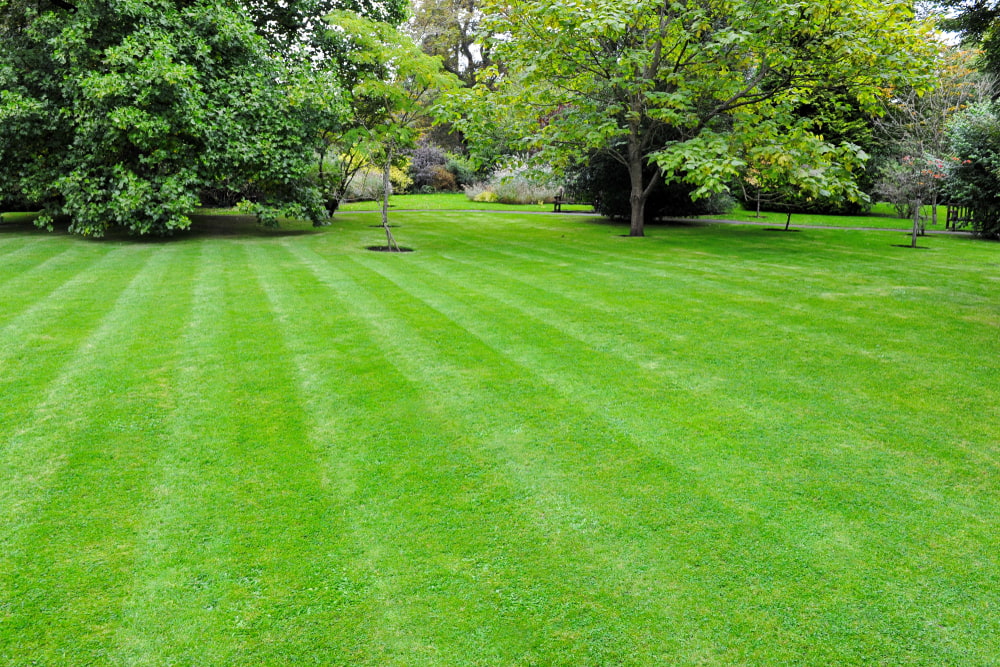
Sanding can be highly productive, but you’ll have to be patient — it’s not a magic wand. It can take three to five years for the full benefits to manifest if you add sand once or twice a year.
However:
You’ll still see results from a single sanding. You’ll notice an improvement in your lawn’s appearance due to the increased water, light, and nutrients. And over time, you’ll see a thicker turf because the roots will have improved.
In the long term, you’ll notice your turf has looser topsoil and more dense, lush, and deep green leaves. You’ll also see a more significant difference after applying lawn fertiliser, as your lawn becomes more capable of absorbing and holding onto nutrients.
The ideal lawn sand
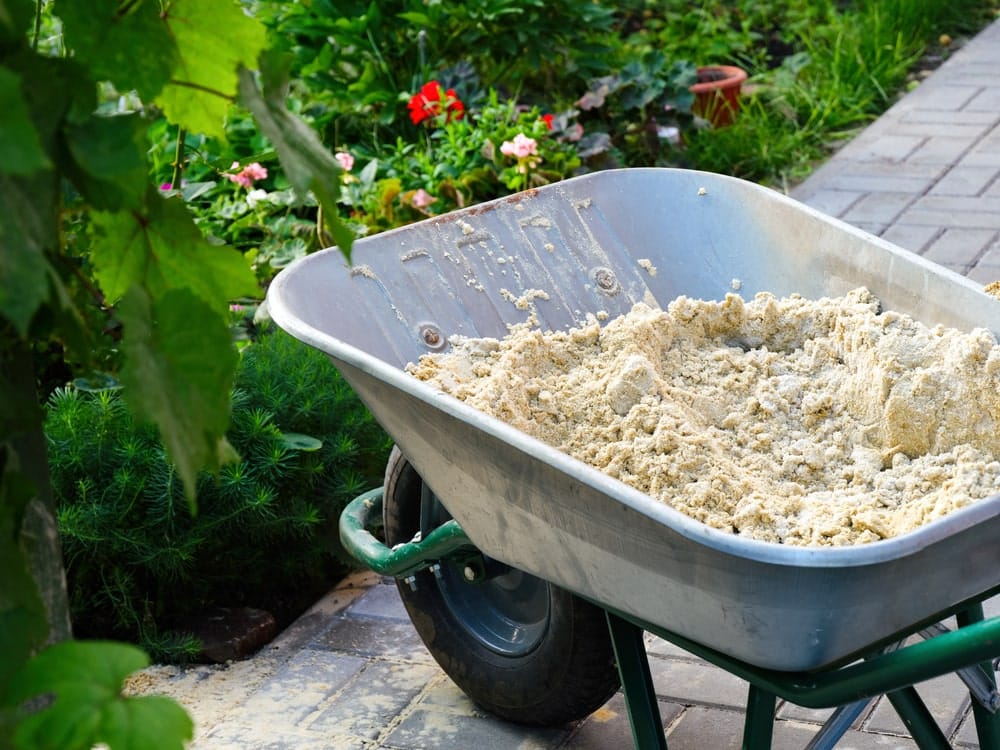
Not all sand is good lawn sand. You want to avoid building sand and beach sand — the chemicals or salt levels can kill your lawn.
The ideal lawn sand is a treatment mix of
- Sand
- Iron sulphate
- Ammonium sulphate (although this isn’t always present).
The ratio varies, but good mixes contain between 2% and 4% iron. Go for washed lawn sand, which is free of silt, clay, chemicals, and other harmful ingredients.
The grain size makes all the difference
For very compacted soil, use sand with a fine grain. Alternatively, for very sandy soil, use sand with a coarser grain. This helps improve the soil and stops it from being washed away.
Go for a sand grain of around 0.3mm for heavily compacted soil. For standard ground, go for a grain of approximately 1.5mm.
Lawn sand with or without added calcium?
Calcium products, such as lime, can help raise the pH of acidic soil, helping attack weeds and moss. However, choose lawn sand without added calcium if your soil’s pH is neutral (around 7 to 8).
Lawn doctor Louis says:
If you’re unsure which lawn sand to buy, go for a sharp, washed, lime-free quartz sand with a grain size of 0.5 to 1.5mm. This will be more easily absorbed and less likely to wash away.
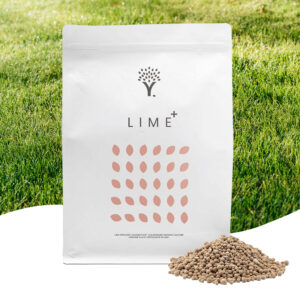
- Neutralises your soil’s pH
- Helps control weeds and moss
When and how to apply lawn sand
For most lawns, once a year is fine.
But if your soil is particularly heavy clay or stressed, apply lawn sand in the spring and autumn until the soil improves. Then switch to once a year.
Avoid laying sand if you’re due for heavy rainfall — it’ll wash the sand away. Choose a dry, warm day if you can.
Lawn sanding in spring
If you’re planning on sanding once a year, choose a dry spring day. But first, apply a 2-in-1 moss killer and lawn fertiliser once the soil temperature has reached 5℃ — this helps optimise the condition of the soil before laying the sand.
April or May are generally the best times to sand, once the soil is warmer and your lawn shows the first signs of growth.
Lawn doctor Louis says:
Lawn Doctor Louis says: You know how hot the sand gets on the beach in summer? Well, ensure you apply lawn sand at least 2-3 weeks before a heatwave — otherwise, the sand will burn the grass.
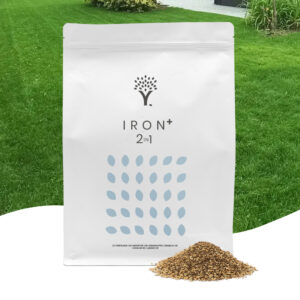
- Kills moss quickly
- Fertilises your lawn
- Perfect preparation before scarifying
Lawn sanding in autumn
After the summer, your lawn usually shows signs of exhaustion after the long, warm, and dry season. So, autumn isn’t the best time to sand unless the soil has become particularly compacted after heavy summer use.
Applying sand in the autumn helps to loosen the soil, which benefits your turf’s roots. Just avoid an autumn heatwave if one is forecast.
How much lawn sand should I use?
The amount of lawn sand you’ll use depends on the product’s composition. Always read the label.
As a general rule:
Apply lawn sand with 2% iron at 125-150g per square metre. However, apply sand with 4% iron at a lower rate — 60-75g per square metre.
Lawn doctor Louis says:
Never cover the grass’s tips — if you can’t see your grass, you’ve applied too much sand, which will suffocate your lawn. Remove a layer with your rake in this case.
How to prepare your lawn for sanding

Lawn sanding works best with healthy, nutrient-rich soil, which readily accepts the additional sand.
So, aerate, scarify, and fertilise your lawn before you add lawn sand.
And then follow our step-by-step guide to sanding your lawn.
A step-by-step guide to sanding your lawn
Lawn sanding is pretty straightforward and can be done directly after scarifying and aerating. If the sand is wet, leave it to dry for a few days before applying it to your lawn; otherwise, it will clog your spreader.
- Remove leaves, stones, and branches from your lawn.
- Mow the lawn to 3cm, collecting the cuttings as you go.
- Scarify and aerate your lawn thoroughly.
- Apply sand. Apply a 50% sand/50% soil mix to level out the surface in large areas of unevenness. In small dips, you can just apply sand.
- Use the back of a rake to level out the sand and soil.
- Sprinkle fast-growing lawn seed, such as MOOWY’s Quick Repair lawn seed. Press the seed into the sand or soil with a roller.
- Water your lawn well, being careful not to disturb the sand or the new lawn seed.
Avoid walking on your lawn for the next three to four weeks — this helps the lawn seed establish and the sand to sink into the soil. Keep the soil moist to ensure effective germination — remember, the more sand you’ve applied, the quicker the soil will dry out.
So, keep an eye on your soil after sanding — don’t let it dry out. Use a sprinkler system if you can.
Have any questions?
I hope I’ve provided the answers you need to effectively apply lawn sand to your turf for great results. But if you have questions, don’t hesitate to get in touch.
I’ll get back to you as soon as I possibly can.
Thanks for reading. And happy gardening.
Frequently Asked Questions
Lawn sanding helps improve the texture of your lawn soil, especially for heavily compacted turf. Applying sand helps open up the soil’s pores to allow water, air, and light to penetrate to your lawn’s roots. Lawn soil mixed with lime helps level out the pH of your soil and kill moss.
Lawn sanding isn’t a universal fix for slow-growing grass. However, it can help improve the soil texture to let your grass plants’ roots breathe better, which will make your grass grow more densely. Identify WHY your grass is growing slowly to determine the best solution – check out MOOWY’s blog for more details.
It’s best to apply lawn sand when your turf is actively growing. So, we recommend sanding in the spring after your lawn has shown the first signs of recovery after the winter. Avoid sanding during a heat wave, as the sand will overheat and coud scorch or even kill your lawn.
Leave a comment
Your answer will be displayed on the site and the interested party will be notified by email.
Leave a comment
Have a question or want to share your experience? Leave us a comment.
Read more
The best tips and tricks for a lush green lawn
 Scarifying Kit
All products after scarifying | Quickly restores the lawn after scarifying | Outsmart weeds quickly with the use of this kit
From: € 39.99
Scarifying Kit
All products after scarifying | Quickly restores the lawn after scarifying | Outsmart weeds quickly with the use of this kit
From: € 39.99
 Spring Lawn Care Kit
MOOWY’s choice for the spring | Quick recovery of your lawn after winter | A strong lawn prevents weeds
From: € 25.99
Spring Lawn Care Kit
MOOWY’s choice for the spring | Quick recovery of your lawn after winter | A strong lawn prevents weeds
From: € 25.99
 Long Lasting Lawn Fertiliser
Effective for 90 days | See results in 14 days! | Suitable for all types of grass and soil
From: € 13.99
Long Lasting Lawn Fertiliser
Effective for 90 days | See results in 14 days! | Suitable for all types of grass and soil
From: € 13.99
Do you want a lawn calendar?
🌱 All important maintenance moments for your lawn during the year. Leave your email and we will send you the lawn calendar for free.
Enter your email
Receive the lawn calendar in the mail
Enjoy a green lawn all year round!




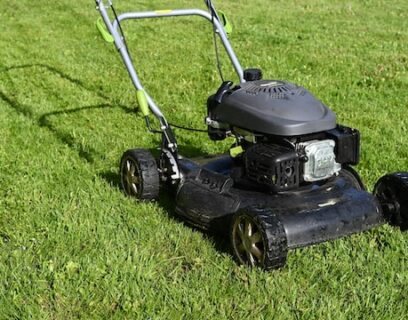

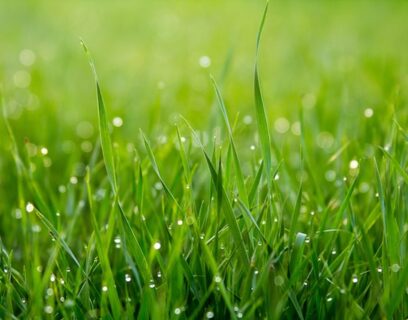






Comments (0)
There are no comments yet. Well then, what are you waiting for to
Be the first to write your comment!inaugurate this pretty page?
Do you have some comments?